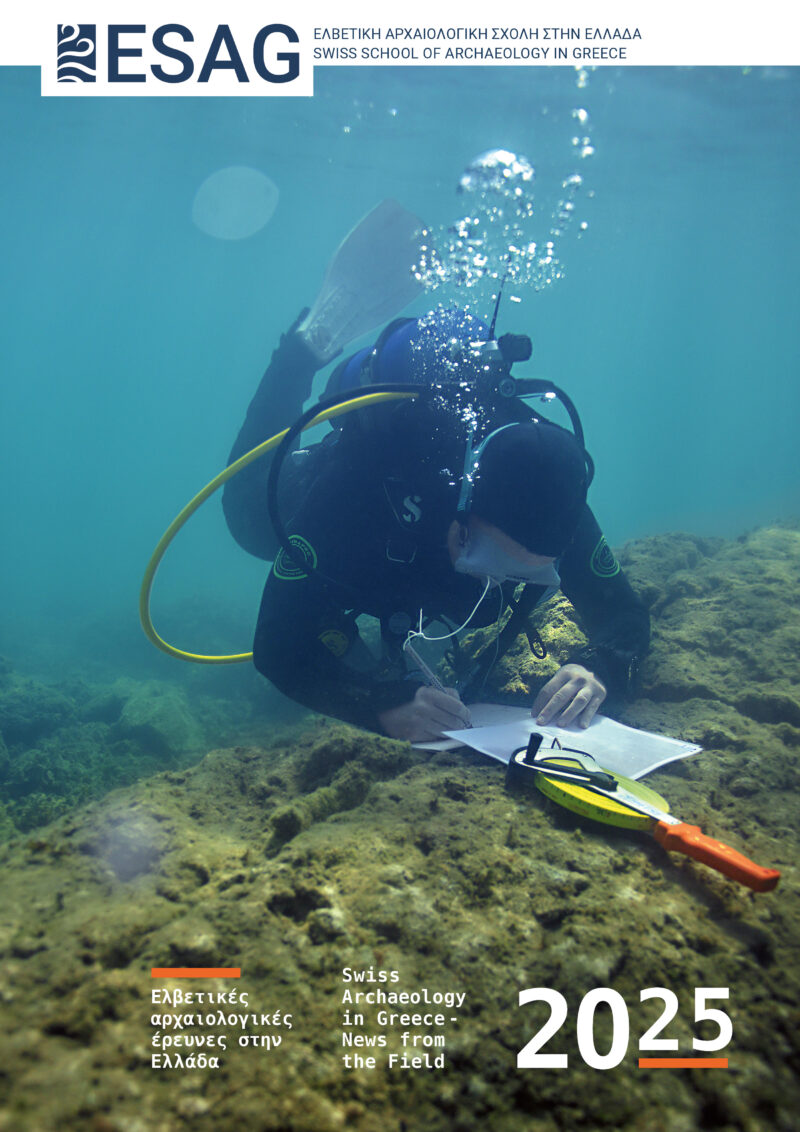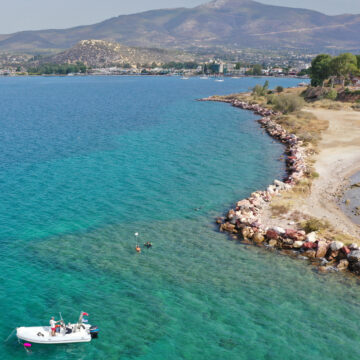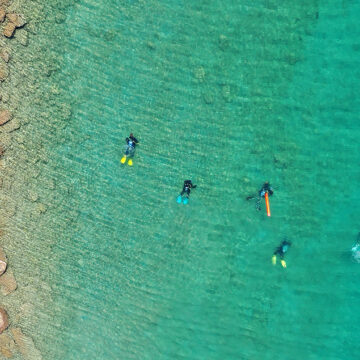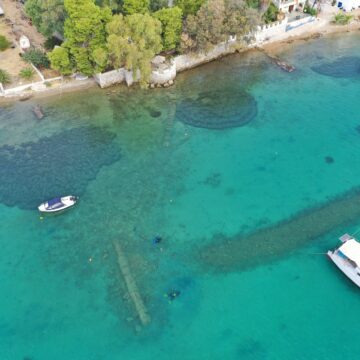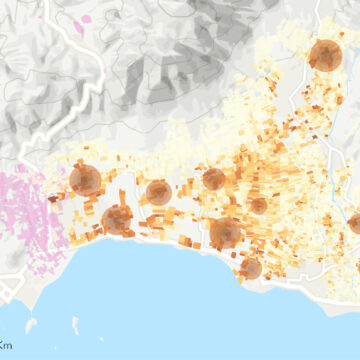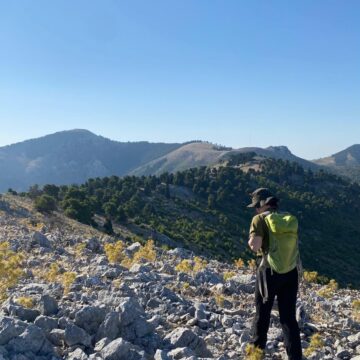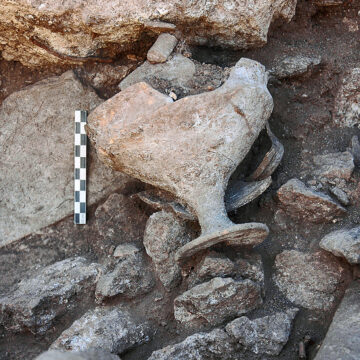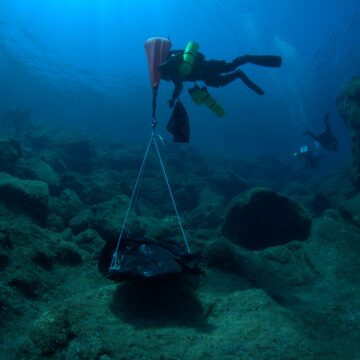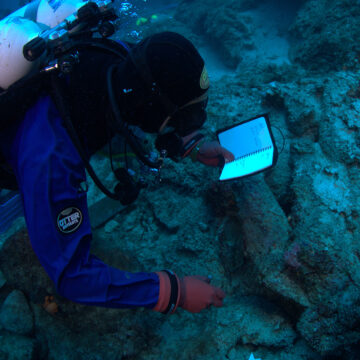Swiss Archaeology in Greece – News from the Field 2025
Director’s foreword
The year 2025 marks the 50th anniversary of the Swiss School of Archaeology in Greece. This symbolic milestone gives us the opportunity to look back at the history of the institution, to reaffirm our mission in Greece, and to define future directions. On the occasion of this anniversary, the School organized a public conference on 19 November in Lausanne, bringing together numerous political, academic, and diplomatic personalities. The following day, an academic day gathered researchers at the University of Lausanne to showcase their recent work and to open new perspectives for Swiss archaeological research in Greece. This year was also marked by high-level visits, notably that of Prime Minister Kyriákos Mitsotákis, accompanied by the Minister of Culture, Lina Mendoni.
Anticythera, Aegina, Eretria, and Amarynthos
Over the past year, the School has continued its fieldwork and research activities. In Anticythera, the team led by Lorenz Baumer and Angeliki G. Simosi completed the final campaign of the 2021–2025 five-year program. While awaiting the scientific publication of the results, the exhibition “News from Anticythera” in Geneva invites the public to discover the very latest findings and previously unpublished elements that make this ship a true laboratory for the study of the ancient Mediterranean.
In Aegina, the Greek-Swiss team continued excavations at the summit of Hellanion Oros and explored the surrounding area, making spectacular discoveries that encourage the submission of a new five-year project, with enhanced resources and teams.
In Euboea, the second campaign studying the remains of the port of Eretria, conducted in collaboration with the Ephorate of Underwater Antiquities and the Octopus Foundation, allowed the completion of the plan of the harbor installations.
In Amarynthos, a final survey campaign complemented the systematic study of the entire Eretrian plain—a goal that still seemed out of reach in 2020, given the rapid densification of constructions in the region. The collected data now pave the way for the development of a new history of human occupation between Eretria and Amarynthos over the long term. Meanwhile, the study of the remains of the Temple of Artemis continues with an international team. A study day organized in Athens brought together more than thirty researchers to review current knowledge, with publication of the results scheduled for 2028. Finally, the Eretria collection was enriched in 2025 by a new volume (XXVII) devoted to inscribed lead strips from Styra, authored by Francesca Dell’Oro.
Monitoring scientific and administrative activities remains central to the missions of the Scientific Secretary. After ten years in this role, Tobias Krapf passes the baton to Tamara Saggini. A lecturer at the University of Basel after teaching the spring semester in Lausanne, Tobias will continue to collaborate with ESAG on research in Aegina and Amarynthos. We warmly thank him for his commitment and extend our best wishes for the continuation of his career, as well as to Tamara for her new role as Scientific Secretary.
The new ESAG headquarters in Athens
Work on the School’s new headquarters, integrated into the future Swiss Center for Culture, Science, and Diplomacy, is progressing on schedule, with installation planned before summer 2026. The building will also host the Swiss Embassy and the Flux Foundation, at the heart of a complex featuring an exhibition and performance hall, open to a Mediterranean urban garden. Located at the foot of the Acropolis, the new headquarters will offer researchers an inspiring environment for reflection, collaboration, and exchange, while strengthening ESAG’s presence in the scientific diplomacy landscape.
Eretria Harbour Project
The exploration of the underwater structures in the harbour of Eretria began this year with a second cleaning and surveying campaign. The 2025 season focused on documenting the western mole and locating its eastern counterpart, while also completing the depth survey of the main harbour basin and investigating a small western harbour area.
The results provide new insights into the ancient coastline and confirm that both main moles were built on consolidated beach formations (beachrocks), creating a protected harbour area of over 70 hectares.
Survey between Amarynthos and Eretria (Euboea)
The 2025 campaign continued the survey between Eretria and Amarynthos, allowing the creation of a precise archaeological map. On the summit of Euboea’s Mount Olympus, a peak sanctuary was identified, used from the Archaic to the Roman period. Finds in the foothills attest to sporadic use of quarries and occasional mining. Diachronic analysis shows occupation since the Late Neolithic, which peaked in the Classical era, declined in the Hellenistic period, and was reshaped in Byzantine times. The project reveals millennia of intertwined settlement, economy, and ritual in a dynamic landscape.
Eretria-Amarynthos Survey ProjectFieldwork on Mount Hellanion Oros, Aegina
In 2025, the Greco-Swiss team conducted excavations at the summit of Hellanion Oros on the island of Aegina, accompanied by two weeks of intensive survey in its surroundings. These investigations highlighted the occupation of the region from the Final Neolithic to the present day, with a predominance of Mycenaean-period remains. Two new fortifications were identified on promontories along the southern coast, and just below the summit of Hellanion Oros, a previously unexplored monumental complex was partially cleared and mapped. An initial trial trench confirmed its dating to the Mycenaean period.
Underwater fieldwork at Antikythera
The team of Swiss and Greek archaeologists and divers completed the fifth underwater excavation campaign on the Antikythera shipwreck in May/June. The main focus was on the recovery of a 40 × 70 cm piece of the ship’s hull made of planks and beams. Dendrochronological analysis revealed its dating to around 235 BC and the use of elm, oak and fir. The lifting of a boulder provided access to the fragments of a male marble statue, which could only be partially lifted due to the very hard maritime deposits. The campaign also uncovered several Chian amphorae, completing the picture of the ship’s cargo, along with a terracotta mortarium used for food preparation. In recent years, the research findings have been showcased in two exhibitions, in Piraeus and Geneva, offering a comprehensive overview of the discoveries.
Antikythera project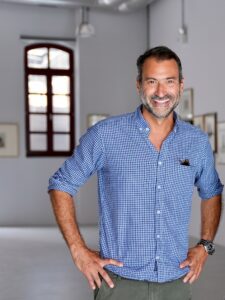
Sylvian Fachard, director of the ESAG
There would not be enough space here to thank all the institutions and individuals who supported the School’s activities. Special mention should be made of the Hellenic Ministry of Culture, the Swiss Confederation, the Swiss National Science Foundation, the University of Lausanne Foundation, the Canton of Vaud, the Evangelos Pistiolis Foundation, the Stavros Niarchos Foundation, and the Sandoz Family Philanthropic Foundation. We are also very grateful to our partners in Greece for fruitful collaborations in the field and at the museum, particularly Angeliki G. Simosi, Stella Chryssoulaki, and Eleni Sp. Banou.
Acknowledgements
–Hellenic Ministry of Culture, Lina Mendoni
–Directorate of Antiquities in the Greek Ministry of Culture, Olympia Vikatou (Director General)
–Department of Foreign Schools, Konstantina Benisi (Head), Sophia Spyropoulou
–Ephorate of Antiquities of Euboea, Dimitrios Christodoulou (Head), Olga Kyriazi, Stavroula Parissi
–Ephorate of Antiquities of Piraeus and Islands, Anna Vasiliki Karapanayiotou (Head)
–Ephorate of Underwater Antiquities, Dimitris Kourkoumelis (Head)
–Embassy of Switzerland in Greece, HE Stefan Estermann
–Embassy of Greece in Switzerland, HE Ekaterini Simopoulou
–Municipality of Eretria, Nikos Gournis
–Prefecture of Central Greece, regional district of Euboea, Giorgos Kelaiditis
–Cultural Association of Amarynthos, Grigoris Foustalierakis
–Gerani Association, Kostas Fragoulopoulos
–University of Lausanne, rectorate, deanship of the Faculty of Arts, Juanita Béguin, Antonio Santangel, Dilek Güngör, Coralie Grossrieder, Patrizia Ponti, Antoinette Nadal
Donors and patrons
–Swiss National Science Foundation
–Federal Department of Economic Affairs, Education and Research
–State Secretariat for Education, Research and Innovation
–Public utility fund of the Canton of Vaud
–University of Lausanne and other Universities in Switzerland
–S. Niarchos Foundation, KIKPE Foundation, Sandoz Family Charitable Foundation, Evangelos Pistiolis Foundation, Isaac Dreyfus-Bernheim Foundation, Theodoros Lagonico Foundation, Afendouli Foundation, Ceramica-Stiftung, Vaudoise Academic Society, Pittet Foundation
